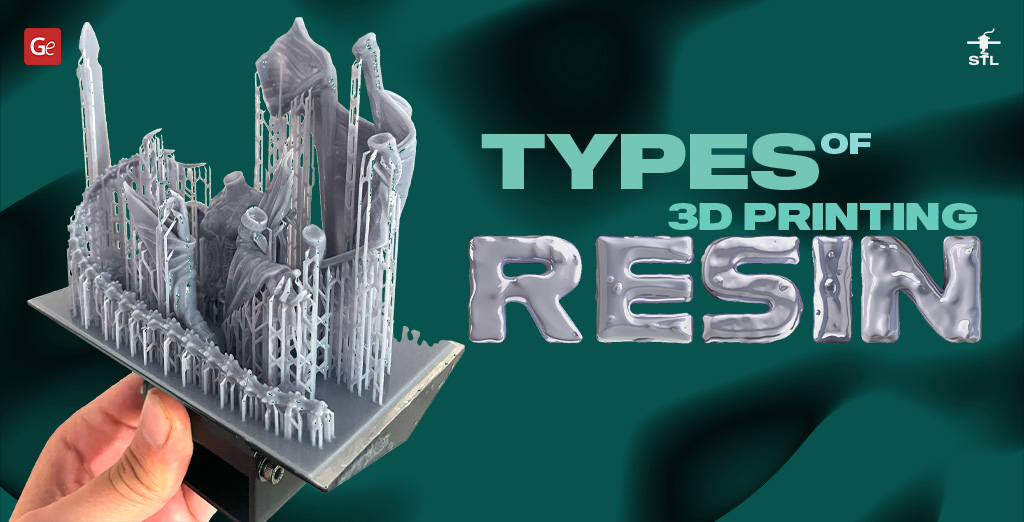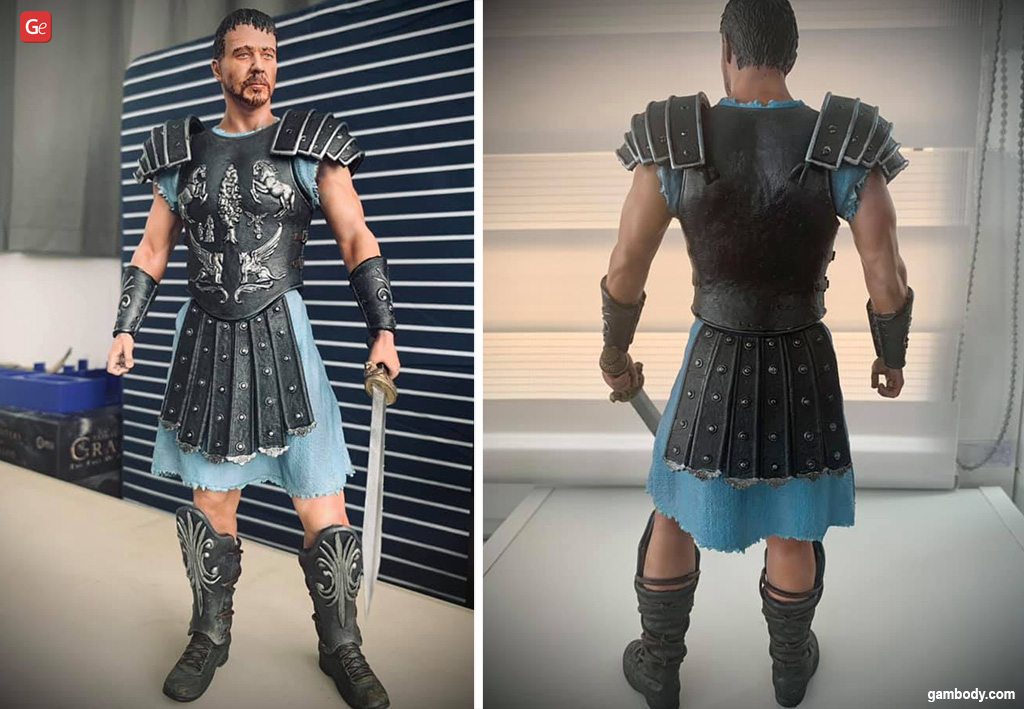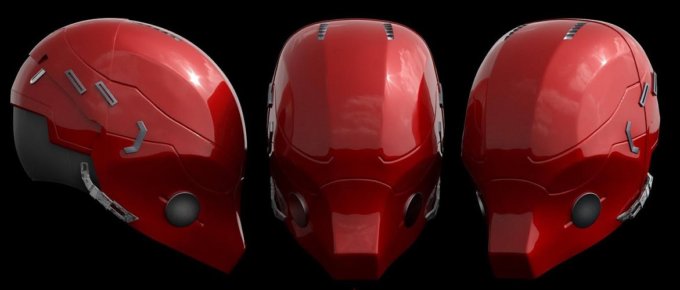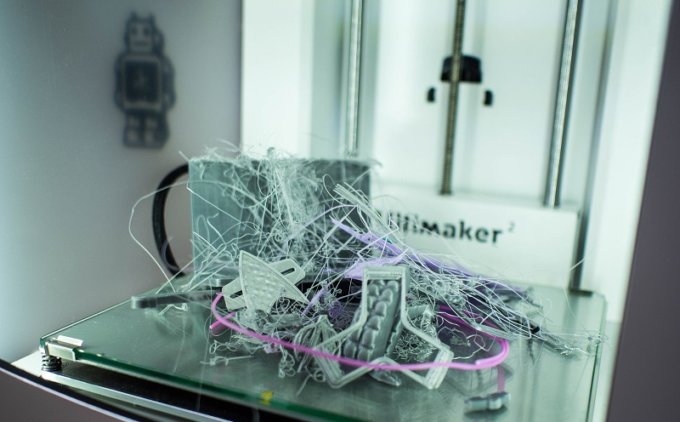With the growing number of budget printers, hobbyists can create more detailed and precise-looking projects by 3D printing resin models at an affordable price. Unlike with FDM filament, choosing resins can be tricky. Having different bottles doesn’t mean you can’t mix them, mainly because you’re dealing with liquids rather than solid filaments. The variety of 3D printer resin types can look confusing, ranging from water-washable to heat-resistant. Still, it is incredible to understand them and learn to mix resins to create the best outcome.
Newbies might wonder which are the best resins for 3D printing, what is working for miniatures and significant objects, etc. Regardless of what resin you choose, they are innately irritating and toxic to your skin. Thus, you should wear proper protection when handling resin or resin-contaminated objects. And while you might not need a respirator as they’re not noxious, it’s a good idea to wear a KN95 or N95 around an open bottle. Also, check your local regulations regarding disposing of uncured resin and other contaminated objects. Fully cured resin should be disposable, like any other plastic.
Read also: Best Resin Printing Tips for Orienting Models on SLA/DLP/LCD 3D Printers

Best Resin for 3D Printing
You can create incredibly detailed objects using affordable desktop SLA and DLP 3D printers. 3D printer resin is liquid. It becomes solid after a reaction with UV light. You only need to choose the best resin for 3D printing miniatures and bigger models, so learn about 3D printer resin types to distinguish between them. Once you master finding suitable resins, you can work on tiny pieces, proper molds, jewelry projects, dental prints, and much more!
Find out more about different types of resin for 3D printers, which can be mixed based on their properties and help you create new formulas for excellent 3D printed results.
Water-Washable Resin
Despite the name of this type of resin for 3D printing, it’s not a good idea to wash prints made with this type of material in the sink unless it’s not connected to your city’s sewer system or your well as an output. Unlike the best resins for 3D printing, which need alcohol to be washed, you can wash this 3D printer resin in your washing station with regular tap water. Just ensure your tap water isn’t contaminated, especially during boil order advisories or when they’re flushing mains.

This stuff is best suited to beginners or if you live in a country where you can’t legally have any alcohol. Please note that mixing it with any other resin will make it not water-washable. While most water-washable resin is plant-based, you might also find ABS-like resin water-washable.
Polymer-Like Resin
This type of 3D printing resin is meant to have strengths similar to its FDM polymer counterparts. Just note that it has different strengths than FDM. However, one advantage over FDM is that you won’t need anything special to mix photopolymers. You can get the strengths of both polymers in your prints.
ABS-Like Resin
ABS-like 3D printer resin has a similar strength to ABS. However, it’s not exactly as strong. This material tends to have more odors than plant-like resin, so wearing a mask around an open bottle would be great.
This type of best resin for 3D printing is only a step up from the plant-based one. You need alcohol to wash it, although acetone works, too, if you spray it onto the print. Use it when you need some strength in your models.
PMMA-Like Resin
Unlike most clear resins, which turn yellow over time, PMMA-like resins do not change color.
Read also: Tips for Making Clear 3D Prints in Transparent Filament and Resin
While it’s possible to counteract this yellowing effect by adding a blue pigment into the 3D printer resin for other clear types, it could alter the color too much and change it into a different hue. PMMA-like resin is best suited for transparent models, but make sure you orient the print flat so you don’t get any refraction from the pixels.
Nylon-Like Resin
Nylon-like resin for 3D printing has strong layer bonding, allowing hobbyists to use it for different models put under stress. It doesn’t necessarily mean you shouldn’t print your parts at an angle. Remember that some nylon-like resins can start as one color but slowly become another shade over time. Thus, they become the best resins for 3D printing when you need your parts to take the tensile load.

Other Polymer-Like Resins
There are other 3D printer resin types, including polymer-like materials. YouTuber Proper Printing has discovered PEEK-like resin and used it in his prints. However, the three types listed above are the ones you’d find to replicate their FDM counterpart’s properties. It is something to remember when choosing something for your next resin concoction.
Specialty Resins
The 3D printer resins listed below have properties different from other types of this popular 3D printing material. You can find the best resin for each project with properties ranging from heat resistance to flexibility. Just note that some of these can be fillers for other resin prints.
Heat-Resistant Resin
The heat-resistant type of 3D printing resin is meant to resist high heat. The temps it can handle depend pretty much on the brand you buy. Some of the best 3D printer resin brands can handle anywhere from 356°F (180°C) to 500°F (260°C). These resins are often available only in one color and can be pricey compared to other options. If you need heat resistance in your resin 3D prints, this is the type you want to use as filler.
Read also: Prevent 3D Printer Fire Issues: Is It Safe to Leave a 3D Printer on Overnight
Tough Resin
This type of 3D printer resin is touch, according to its name. It is designed for high-impact resistance.
The touch resin for 3D printing is often available in one to three color options. Once again, it is meant as filler resin. So, if you need impact resistance in your prints, this is what you want to add to your projects.
Flexible Resin
The flexible resins have some flexibility in the result. These 3D printer resin types are usually meant to be used independently. Still, you can also add them to other resins to improve their properties. They’re best used if small parts need to have some stretch or if you need impact resistance but don’t want to pay for the tough resin for whatever reason.
Read also: How to 3D Print Flexible Filament at Home: Tips for Success
There are multiple types of the best 3D printer resin out there. We haven’t listed all of them as that would take too long and be out of date in a few months. It’s essential to research to know what you need for your next printing project.


